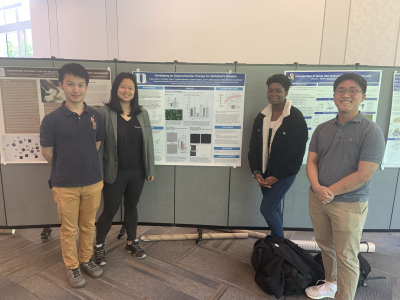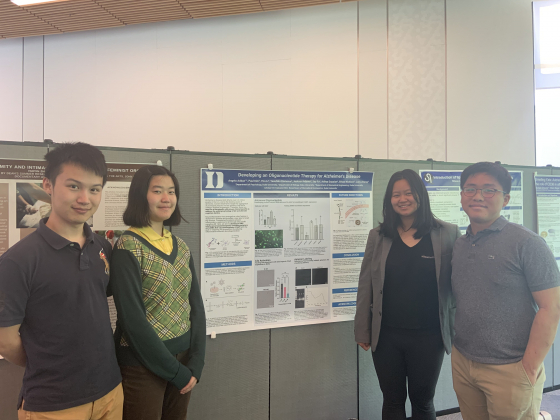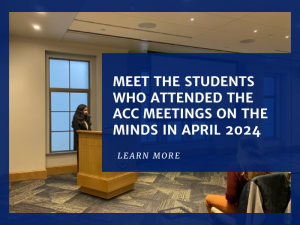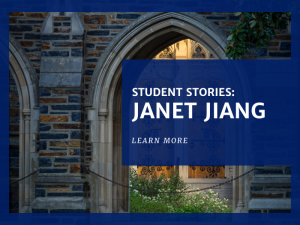Alzheimer's No More: Targeting neuroinflammation-related neurodegeneration

Last spring, Lucy Zhang '23 (Biomedical Engineering), Paul Kim '23 (Neuroscience), Yasuhiko Komatsu '23 (Biomedical Engineering), Yiru Li '23 (Biomedical Engineering), and Angela Addae '24 (Neurobiology), received a Student Team Grant Award to explore and develop therapeutic treatments to address disease progression and cognitive decline in Alzheimer's patients. The project, "Alzheimer's No More: Targeting neuroinflammation-related neurodegeneration", focused on developing strategies to deliver siRNA into brain-resident microglia cells. Dr. Cameron Kim served as faculty mentor to the team.
By Lucy Zhang, Paul Kim, Yasuhiko Komatsu, Yiru Li, and Angela Addae
Alzheimer's disease (AD) affects over 6.2 million people in the U.S. and is the leading cause of dementia. Current treatments target the aggregation of amyloid β plaques and tau proteins but fail to address disease progression. Therefore, there is a need for a therapeutic to address the underlying biology of AD and alleviate cognitive decline. Neuroinflammation has emerged as a key feature in AD and provides a new way to target the disease.
As a continuation of a yearlong BME 490L/590L: Senior Biotech Design project, the Student Teams Grant supported our team in developing strategies to deliver siRNA into microglia cells, which are brain-resident immune cells. Specifically, we focused on viral and non-viral methods for the downregulation of complement protein receptor C3aR. C3aR is an important receptor because it is involved in amyloid β innate immune activation, which is an under-targeted therapeutic area, and knocking it out in mice has led to improvements in tau pathology.
Through our work in the 2022-2023 school year, we have created an AAV2-shRNA capsid and demonstrated successful viral transduction of BV2 murine microglial cells with AAV2. This engineered plasmid contained the siRNA for downregulating C3aR as well as GFP expression so that we could quantify the percent transduced. The highest efficiency we achieved was a transduction rate of 55% of the cells as well as a total 63.3% knockdown of C3aR expression. We learned how to culture and transduce cells, how to run RT-qPCR, and how to use flow cytometry to measure GFP fluorescence intensity.
Overall, through this project, we all grew as independent and collaborative researchers. As a team, we were able to gain skills in many scientific techniques including flow cytometry, gel electrophoresis, and bioconjugation. Although, having an open-ended question led us to a lot of issues and troubleshooting, we were able to develop resiliency and overcome issues as a team by motivating one another. We found this experience to be an invigorating one that has helped us prepare for our future research endeavors.
We are very thankful to the Undergraduate Research Support Office for funding and supporting this project, our advisor Dr. Cameron Kim for offering his time and mentorship, and the BME teaching lab, in particular Maggie Gatongi, for lending us the space and equipment to test, stumble, and succeed in our experiments.




